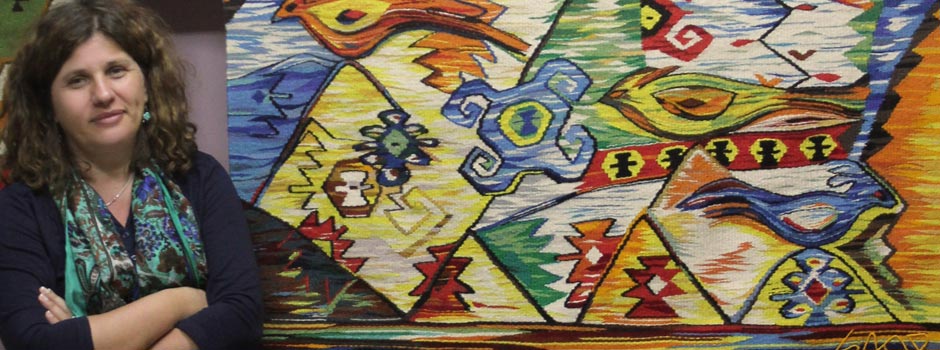
An interview with an award-winning Bosnian artist Amila Smajovic Harmony, Repetition and Vivid Colors of the Bosnian Kilim
Jan 28, 2013 Interview

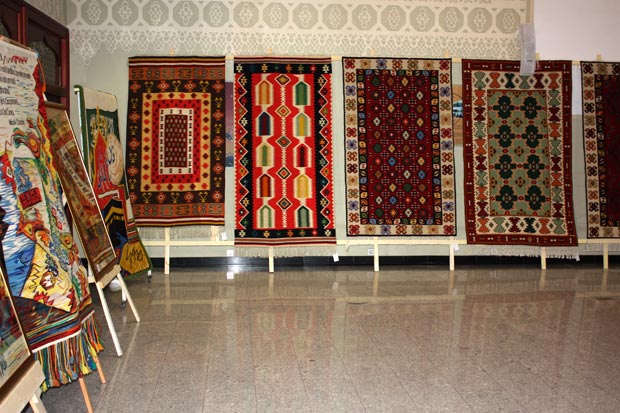 A Bosnian handmade kilims by Amila Smajovic / Courtesy of the Artist
A Bosnian handmade kilims by Amila Smajovic / Courtesy of the Artist
At the beginning of my career as an artist, I focused on Conceptual art. I established the conceptual project 'Amila State' in Sarajevo in 1995 on the occasion of the 1000 Days of the City. It was my favorite project. In that project, I was working on graphic prints –woodcuts in fact– using my name Amila. This reminded me of Bosnian carpets.
In 1996, I started research on traditional Bosnian carpets and I wanted to focus on their artistic values. I established the workshop for the preservation of traditional weaving crafts and after that the Association for the Protection of the Bosnian Carpet. Unfortunately, Bosnian carpets are disappearing slowly in our country. My activities present and shed light on this problem. Through my association I have organized many exhibitions, lectures, and workshops involving students, different schools, members of the Bosnian Government, women refugees and so on. Our aim is to preserve the traditional Bosnian carpet and to apply traditional values to modern design.
 A Bosnian kilim by Amila Smajovic / Courtesy of the Artist
A Bosnian kilim by Amila Smajovic / Courtesy of the Artist
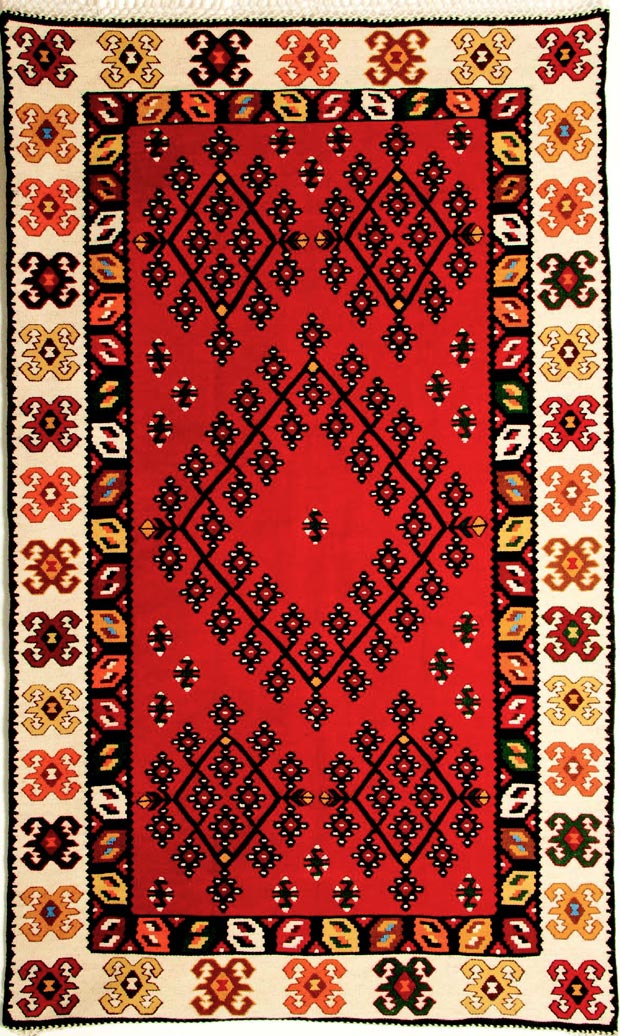 A Bosnian kilim by Amila Smajovic / Courtesy of the Artist
A Bosnian kilim by Amila Smajovic / Courtesy of the Artist
The techniques of weaving in Bosnia have been known from the Neolithic era. The first products of weaving were rugs with simple patterns. In the Middle Ages, we find the first Bosnian carpets also with simple patterns. During the era of the Otoman empire, the Bosnian carpet became more complex in terms of both design and technique of weaving. But the real success was achieved during Austro-Hungarian rule. They established the first weaving factory and published the first book illustrating original and traditional Bosnian patterns. The golden age of the Bosnian carpet was the period before Wold War I. Since that period, however, the development of the Bosnian carpet is in decline. I am afraid that the Bosnian carpet, unfortunately, has no future.
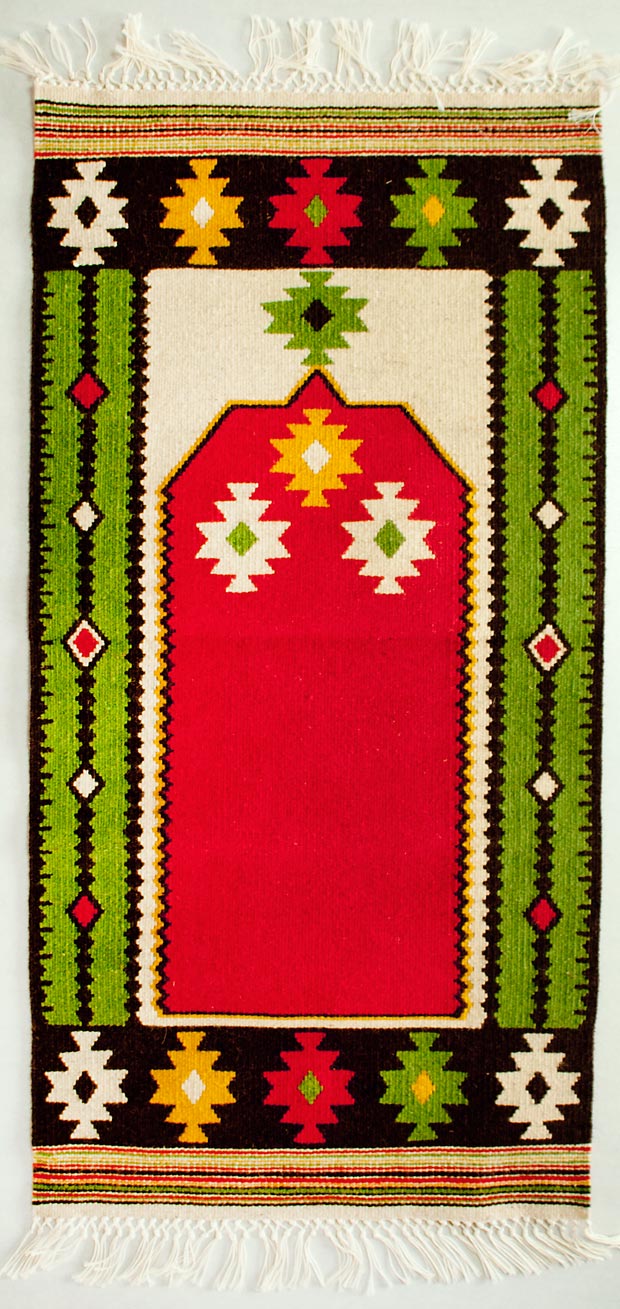 A Bosnian handmade prayer rug by Amila Smajovic / Courtesy of the Artist
A Bosnian handmade prayer rug by Amila Smajovic / Courtesy of the Artist
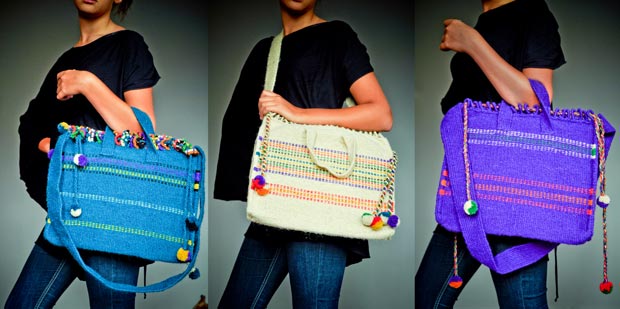 The handbags, inspired by Bosnian traditional weaving by Amila Smajovic, 2011 / Photo by Vanja_Lisac / Courtesy of the Artist
The handbags, inspired by Bosnian traditional weaving by Amila Smajovic, 2011 / Photo by Vanja_Lisac / Courtesy of the Artist
The main characteristics of the Bosnian carpet are harmony in composition, repetition of the same motifs and vivid colors. In my art, I use motifs from Bosnian carpets but not the harmony and repetitions. My compositions are broken, I want to show the new reality, the chaos in the global world with the message that we have lost the harmony inherent in traditional values. My work is a method of preserving a part of the cultural heritage.
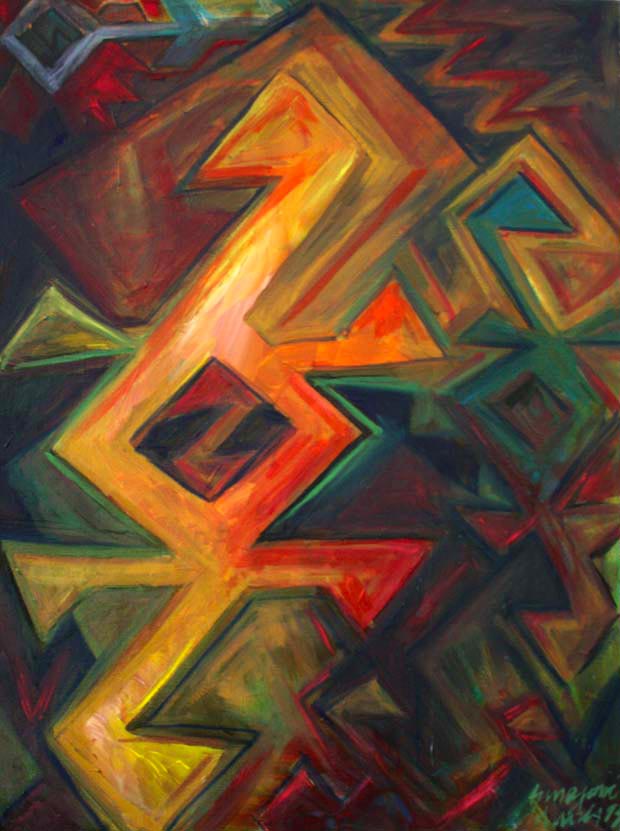 A Bosnian kilim as a motif in a painting by Amila Smajovic / Courtesy of the Artist
A Bosnian kilim as a motif in a painting by Amila Smajovic / Courtesy of the Artist
On March 1st 2012, the National Day of Bosnia and Herzegovina, I won the prize for my tapestry entitled ‘Note on the Land’ at the International Exhibition that took place in the Sultanate of Oman under the high patronage of Engineer Sultan bin Hamdoon al-Harthy, the Head of Muscat Municipality and IRCICA, the Research Center for History, Art and Islamic Culture in Istanbul. My tapestry will be permanently exhibited in the museum Bait al Baranda in Muscat. I am happy to have exhibited Bosnian art in the Gulf. As an artist and a professor, I have to show the cultural values of my country. My aim is to protect and promote these values. It is the only way for our future.
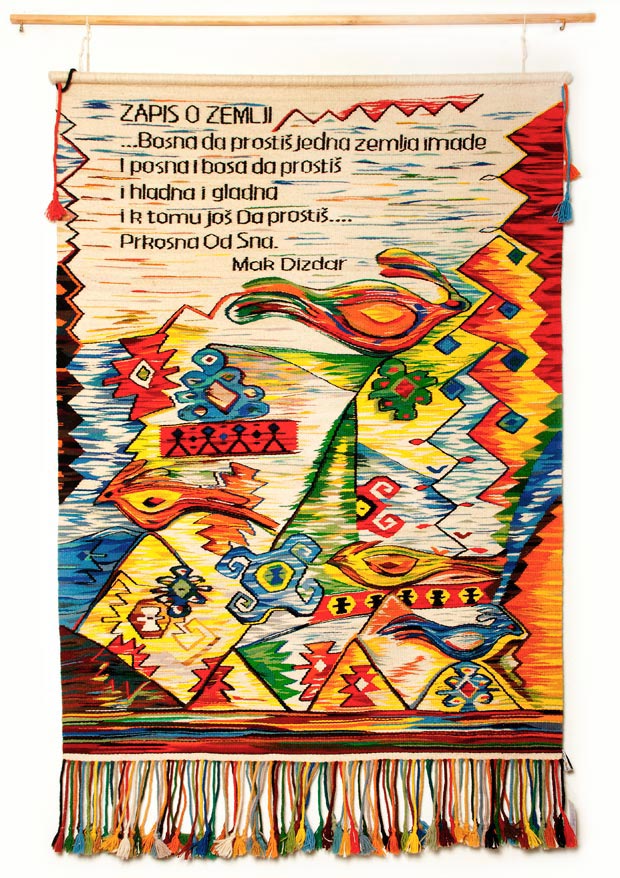 The awarded tapestry entitled ‘Note on the Land’ by Amila Smajovic, at the Muscat International Festival of Arts / Courtesy of the Artist
The awarded tapestry entitled ‘Note on the Land’ by Amila Smajovic, at the Muscat International Festival of Arts / Courtesy of the Artist
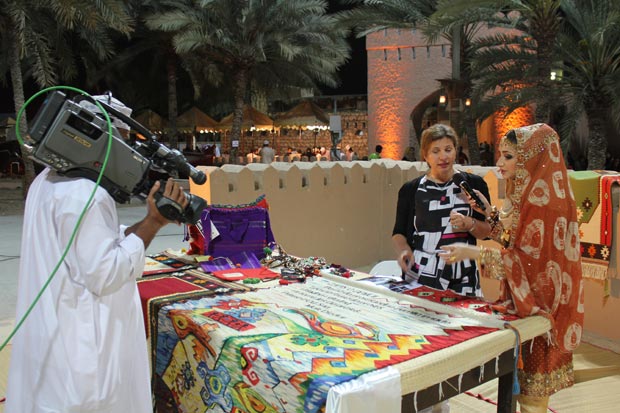 Amila Smajovic presented by a local media at the Muscat International Festival of Arts / Courtesy of the Artist
Amila Smajovic presented by a local media at the Muscat International Festival of Arts / Courtesy of the Artist
Comments
Add a comment